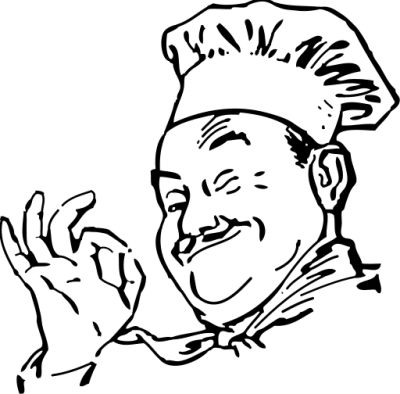It’s Tea Time!
In school, as a punishment for the misbehavior our distraught teacher gave us tiringly boring task – to write a 100 word essay on ‘What if there was no tea in the morning?’
I, being quite in my own world of plotting even more devious ways to trouble our teacher and ignorant of the world didn’t spare the topic much thought. But today, I cannot even begin to imagine of how crazy I would go without my morning tea. The aroma of tea leaves induced with finely chopped ginger swirling in our kitchen pushes life into my sleepy body. It’s intoxicating smell leaves me breathless. The sound of the water boiling on the stove makes wind chimes look diminished in comparison.
A bit bitter taste (I don’t like it sweet!) of tea with newspaper in my hand as I enjoy it sip by sip is how my morning ideally begins. On days when I am frantically running all over the place, late for college, searching for my books, that morning tea brings me down to earth. To sum it up, tea is such an elemental part of my life that it instigated me to write a whole article about it!
‘Tea’ made its first extravagant appearance in China as a customary ‘Gongfu’ ceremony. Tea leaves are brewed in teapots and later additional boiling water is poured on those same leaves to infuse more flavor and taste.
In those days it used more for medicinal purposes due to its benefits on health than as a beverage of choice. Traditionally, Chinese medicine prescribes green tea as an important ingredient in curing numerous illnesses. Perhaps, no country has taken their tea more seriously than the Japanese. Japan is the place where it achieved its highest glory and precision as seen in the Japanese tea ceremony popularized by the name of ‘Cha-no-yu’.
Earlier, to serve the tea with act of perfection was an important lady-like quality that grooms looked for. Until the 16th century, Sen Rikyu was considered the greatest tea master before it became main stream. Hospitality of guests, realizing every moment as precious and ability to act simply are fundamentals that constitute the Cha-no-yu.
Green tea has gained far more importance in these countries. It is quite often mixed with flower or fruits to give it a scented or flavored characteristic. Its quality to blend easily is prominent in making it popular.
Tea ceremonies gained their elegance, style and a mark of being an upper social class in society in British in 1600’s. In the beginning, only coffee houses exclusively for men served tea. Due to its gaining popularity, tea houses opened up for both men and women.
Afternoon tea became synonymous with ‘Britain’ only 200 years later. Anna Russell, Duchess of Bedford, first started this tradition. Since she could hardly contain her hunger between lunch and supper, she began ordering servants to get her some snack and tea in the afternoons. This became a quite trend among her friends and soon in the rest of Britain.
Today, black tea is the most consumed variety of tea in UK. The term ‘tea break’ has also been utilized in game of cricket. White tea is considered to be the most pure and least oxidized form of tea. It brews a very light flavor due to the fact that it leaves when prepared gives a light pale yellow color to it. Another important and popular form of tea is the Oolong tea. Served especially in Chinese restaurants, it is also known as Wu long tea. It is known for its spiced savor, perfumed aroma and exquisite taste.
Authenticity and grandeur can be explained well through the Moroccan tea ceremonies. It is customary for participants to wash of their hands in orange mixed water before settling to watch their host prepare tea. The boiling golden colored liquid is poured from such a height it creates an illusion of being a golden thread into little glasses that can be emptied in a single gulp.
Herbal tea is referred to as tisane since it excludes leaves from the Camellia plant unlike other forms of tea. Mostly utilized for medicinal purposes it is infused with purest of herbs, spices, fruits and flowers. They can be served as hot or cold. The most favored coffee lover’s tea is Mate tea. It is extensively prepared from leaves and twigs of the ‘yerba mate’ plant. Its unique feature is its coffee like taste making it more delicious and lip-smacking.
Tea has been most commercialized in India since its first arrival in the 19th century along with the British. Made from the favorite Red Label brand, tea leaves simmered in boiling water with spoonful of sugar and then, mixed with milk it is one of the most basic lessons to be taught in our beloved country.
We love bed-tea, tea while reading newspapers, while working with our evil bosses, after a painfully boring lecture, while travelling, after a good nap, after a movie, while hosting parties and socialising with our guests, during gossip sessions, after a tiring day and even before sleep…the list is endless!
The famous ‘chai’ is spiced with pepper, cinnamon, cardamom, cloves and ginger and sold as ‘masala chai’ ranging from Rs. 20 to Rs. 200. Tea in our country is used to dip everything, from Marie biscuits to bread butter to toasts to even rotis smeared with ‘chatni’.
We drink tea in happiness, sadness, in sickness and in health. Tea is an exuberant part of our custom and tradition that has emerged as our chosen lifestyle. To even think of our lives tea-less makes it unbearable, intolerable and intensifyingly boring.
So, let us take a moment to raise our cups and saucers to Tea!



